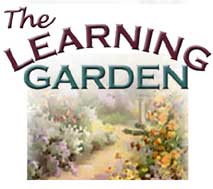
From Seed to Seed:
Plant Science for K-8 Educators
 |
From Seed to Seed: |
|
|
The Ever-changing Landscape Although a natural landscape may seem static (and some are reasonably stable), in reality many ecosystems are in the process of a slow, orderly progression of changes. The term succession refers to changes that occur in plant and animal communities as an unstable ecosystem changes. Succession is most easily observed in a recently disturbed area. Imagine, for example, a newly cleared woodlot. Now that the large trees have been removed, seedling trees that had been stunted by the deep shade will have the sunlight necessary for rapid growth. Herbaceous plants, too, may flourish, while some of the shade-lovers wither in the bright sun. Pond ecosystems also experience succession. Grasses and sedges near the
edge of the pond trap silt, providing space for terrestrial plants to
take hold. The margins Gardens, too, are ever-changing landscapes, and gardeners are constantly manipulating the type and quantity of vegetation. We prune trees and bushes so that they won't shade out nearby plants. We pull weeds, and mulch, and pull more weeds, keeping competing plants at bay. You see-there is so much that you and your students can learn just by spending a few hours in the garden! |
||||
|
Made possible by a grant from Oracle Corp. Copyright 2001, National Gardening
Association, Inc. For questions regarding this web site, contact Webmaster |